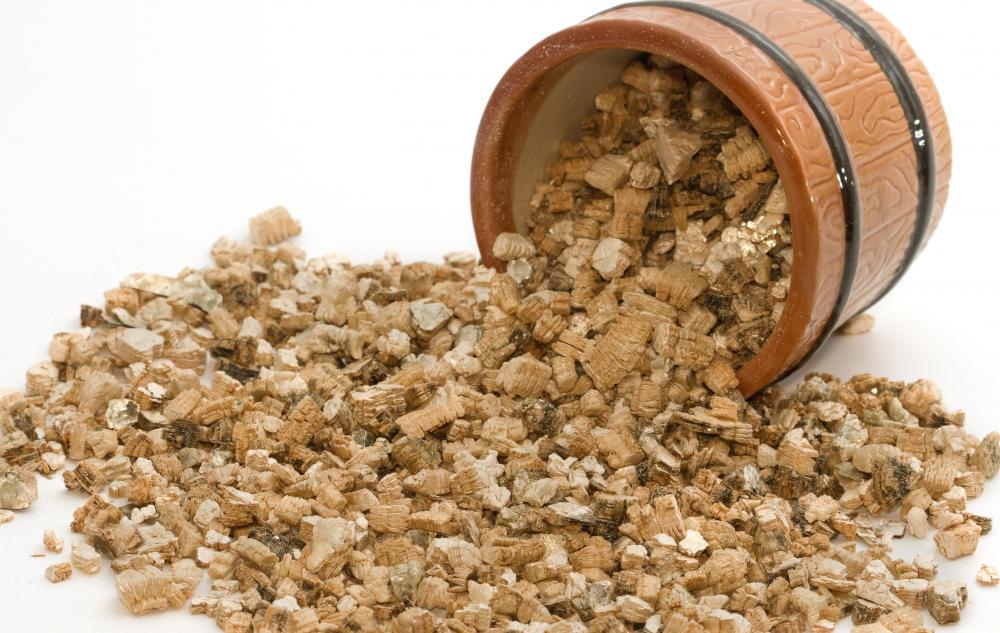At WiseGEEK, we're committed to delivering accurate, trustworthy information. Our expert-authored content is rigorously fact-checked and sourced from credible authorities. Discover how we uphold the highest standards in providing you with reliable knowledge.
What is Perlite?
Perlite is a form of naturally occurring rock comprised predominantly of silica. The rocks are light and are filled with tiny cavities that hold moisture. One of the primary uses of perlite is for aeration and moisture retention in soil.
The natural shape of perlite lends itself to trapping moisture so that it is available to the root systems of plants. Its structure also allows for aeration within the growing media. This combination provides a healthy environment for many plants.

This growing medium is also used for hydroponic, or soil-free, gardening. The sterile, weed-free environment provided by the substance is very good for rooting cuttings. Its potential hydrogen (pH) is neutral, having little or no impact on soil acidity or alkalinity.
In areas where soil is heavy clay, it often helps plant roots penetrate, prevents standing water and surface crusting, and provides insulation for the roots to prevent damage from extreme temperature changes. Vegetable and flower gardens can be augmented by mixing perlite and peat moss into cultivated soil. A similar mixture may be used when planting trees or shrubs. Because the media will not deteriorate, such benefits typically last for several years.

Planting in containers may also be enhanced by adding this silica rock to the potting soil. It is light in weight and makes moving pots and planters easy. While the mixture will help the soil retain moisture, potted plants generally need more frequent watering than those in a garden.
Some gardeners prefer to enhance soil with vermiculite. Vermiculite is a mineral composed of alumino-silicate clay. It is sterile, holds three times its volume in water, and attracts nutrients. When mixed with soil, it presses the mix together, reducing air flow and trapping water, which is useful for moisture-loving plants. As this is a clay-based additive, it will need to be replaced as it breaks down over time.
Vermiculite and perlite may be used together. The perlite will maintain good aeration and drainage, while the vermiculite provides good nutrient retention. The two may be mixed in equal parts or adjusted according the particular garden or pot.
Interestingly, perlite is also used in construction to provide loose-fill insulation. It can enhance fire ratings and reduce noise transmission. Resistance to rot and vermin makes it an attractive choice for builders. The silica rock may also be used in industrial applications as a filter media. Cleaners, polishes, and soaps can include it as an abrasive ingredient. It can also be used as a high-performance filler for multiple sources, including plastics and cement.
AS FEATURED ON:
AS FEATURED ON:












Discuss this Article
Post your comments